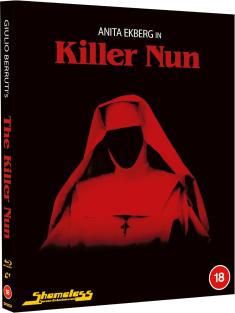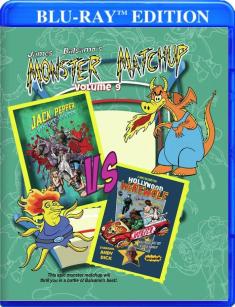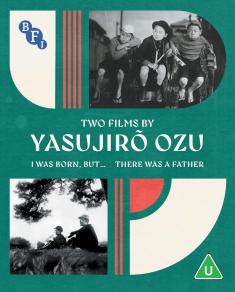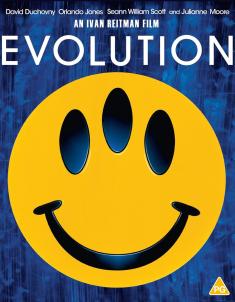JVC DLA-RS400U Reference Series 4K Projector
Overview -EDITOR'S NOTE: Please welcome Dustin Sharp. Many of you know Dustin as long-time HDD Forum member, Plisken99, but he's here today to share his professional expertise as a home theater installer. Cheers.
PROS
-Outstanding brightness in its class
-Extremely detailed image
-4500hr bulb life
-Supports 3D
-4K eShift (HDR compatible)
CONS
-Motion Judder
-Can be a challenge to get 4K depending on cabling
-Slow lock onto video signals
-3D glasses and 3D emitter sold separately
INTRO
JVC changed the front projection game ten years ago with the launch of the RS1, which produced superlative black levels for the era, and has remained the reigning champion of contrast / black levels. At the time, entry-level LCD projectors cost under $5,000 and impressive contrast ratios meant 900:1, but they all suffered from gray black-levels and largely inaccurate colors. Entry-level DLPs of the same era cost around $9,000 and produced better colors, but also had lousy black levels. Using DILA technology to achieve a native 15,000:1 contrast, the $5,000 JVC RS1 was unrivaled and is still respectable (indeed there are still many happy RS1 owners out there). Since then, other manufacturers have approached JVC black levels, but none have quite bested them. Previously the only people enjoying picture quality of its caliber were CRT projector owners.
Launching in early 2016, the DLA-RS400u, with a native 40,0001:1 contrast ratio, represents JVC's latest entry-level Reference Series projector. Its more expensive brothers the RS500u and RS600u get you 120,000:1 and 150,000:1 native contrast ratios, respectively -- and both come with my highest, professional recommendation -- but the price goes up about $2000 every tier.

DESIGN & SETUP
In terms of physical design, the RS400u still resembles an RS1 after all these years. A straight forward sleek matte black rectangular box, they are larger than similar options from other manufacturers like Sony, Epson or Panasonic. Other than the classy, gold lens ring, and slightly different corners, you'd swear it's the same projector. Not portable by any means, the RS400u is a dedicated home theater projector and should be set and forgotten. The zoom lens makes placement flexible too -- for a 150" screen, you can place the projector between about 15 and 30ft away.
Using D-ILA technology (same as Sony's SXRD), the RS400u features a native contrast ratio of 40,000:1, or a dynamic contrast of 400,000:1 which can be achieved using the iris. The iris can be set to automatic for higher contrast or adjusted manually. I prefer to leave the iris open on manual; this yields a bright, pleasing image while retaining inky black levels (and automatic iris' are too distracting for my tastes).
The RS400u is also capable of 3D, 4K upscaling using eShift technology, and is HDR compatible. In other words, this is a native 1080p projector that accepts UHD/HDR/HDCP2.2 signals and can project them at a 4K-esque resolution by rapidly shifting sub-frames by half a pixel, which makes this projector generation a stopgap before true 4K projectors (hard to say when those will be under $5,000 -- currently the 4K laser JVC RS4500K retails for $34,999).
Basic setup is extremely easy with the automatic lens and lens shift, allowing you to place the projector few feet off center as needed. After placement, put your nose against the screen to adjust focus via the included remote. Responding to past criticisms, JVC finally includes a 6-axis color management system, which means it can be calibrated to near perfection with a good calibration disc. Color is pretty accurate out of the box, but a professional can manipulate the CMS to get it pretty much dead on. Set Gamma based on your screen, usually to 2.2 or 2.4.
4K is problematic when it comes to installation. Getting 4K to handshake can be a challenge, as you need a new 18gbps HDMI cable (33gbps preferred) that's less than 15ft. Even expensive cables with signal repeating Redmere technology have proven problematic with this projector.
Also noteworthy, the RS400u supports constant height as well as FIVE lens memory positions, allowing you to do 2.35:1, 1.85:1 or 1.78:1 on the same screen. At 3ft over my head, Low Lamp Mode fan noise is almost imperceptible during a movie. High Lamp Mode is a little noticeable. High Altitude Mode, which I need living in Colorado, is pretty loud.

SPECIFICATIONS
Courtesy of JVC...
Native Resolution: 1920 X 1080
4K e-shift4 Technology: Yes
Accepted Resolution: 3840 X 2160
Lens: 2X Zoom, Motorized Focus, f=21.4 to 42.8mm/F3.2-F4
Lens Shift: +/- 80% Vertical and +/- 34% Horizontal (Motorized)
Projection Display Size: 60 inch-200 inch (diagonal)
Light Source: Lamp NSH 265W (lamp life approx. 4,500 hours when lamp is in Low mode)
Brightness: 1,700 Lumens
Contrast Ratio: 400,000:1 (Dynamic), 40,000:1 (Native)
Inputs: HDMI X2 (Full Speed 18Gbps HDMI/HDCP 2.2 Compatible w/ HDR)
Outputs: Trigger (DC12V, 100mA), 3D Syncro (Mini DIN 3 pin)
Control Terminals: RS232C (D-sub 9 pin), LAN (RJ45)
Video Input Signal Format: 480p, 576p, 720p 60/50, 1080i 60/50, 1080p 60/50/24, 3840x2160p 60/50/24, 4096x2160p 24
PC Input Signal Format (HDMI): VGA/SVGA/XGA/WXGA/FWXGA/WXGA+/SXGA/WXGA++/WSXGA+/WUXGA
3D Format Frame Packing: 720p 60/50, 1080p 24, 1080i 60/50
Side-by-Side (half): 720p 60/50, 1080p 60/50/24, 1080i 60/50
Top & Bottom: 720p 60/50 1080p 24
Fan Noise 21dB (When the lamp is in Low mode)
Power Requirement: AC100V-240V, 50/60Hz
Dimensions (W x H x D): 17 7/8" x 7" x 18 1/2"
Weight (net): 34lbs
2D PERFORMANCE
I've owned several JVCs, from the RS1 to now, a couple Sonys, and installed several Epsons. Hands down, the RS400u is the most refined projector I've had to date. Inky blacks and a smooth natural image are JVC hallmarks, but the RS400u takes both to another level. When watching Blu-ray movies, it retains a non-digital, natural film-like image while being staggeringly sharp. The fact that this is the brightest projector I've ever owned gives it a decisive edge, providing a rich punchy image, even at my screen size. In fact, this projector is so bright, I finally upgraded to a 150" screen (it's an acoustically transparent Seymour Centerstage XD screen, 16:9, 1.3 gain. )
As mentioned, the RS400u features JVC's eShift technology to effectively upscale 1080P sources to 4K. At nearly 2,000 hours in with this projector, I can tell you I leave it on all the time. It nicely accentuates the detail from 1080p sources, making the image appreciably crisper. Star Wars The Force Awakens is my go-to reference material (everyone who sees my theater wants to see that first). Lightsabers in the final fight are absolutely dazzling, with the snowfall effect it lends to the 3D without glasses effect. Having also seen The Force Awakens in IMAX, I can honestly say the image at home is more pleasing with deeper blacks!
Motion judder remains the chief weakness of JVC projectors, one of the few flaws left, actually. Coming from a Sony HW55, the JVC's panning is not as smooth, but it's still an improvement over previous generations. I found Low to be the optimal motion enhancement setting. Not to be confused with "Clear Motion Drive", which you can turn on to be rid of motion artifacts altogether, but I'd prefer to rub salt in my eyes personally. Leave that setting OFF.
Lastly, they say theRS400u's input lag is supposed to be among the worst for gaming. However, I play Star Wars Battlefront online, among other Xbox One games, and suffer no lag issues.
(projector playing with the lights OUT)
3D PERFORMANCE
JVC caught a great deal of flack in the past over poor 3D performance, lots of crosstalk and horrible motion artifacts among the chief criticisms. I'm extremely happy to report JVC has effectively fixed their 3D problems. The RS400u has the best 3D performance I've seen in a non-DLP projector. It virtually eliminates crosstalk and has a very bright punchy image. Brightness here is the RS400u's main strength. While 1700 lumens doesn't sound all that impressive with other brands boasting 2200-2600 lumens, they usually come out much dimmer than advertised after calibration OR have nowhere near the contrast. The JVC actually outputs near its full 1700 lumens in 3D and 4K modes.
That said, I am not a fan of the JVC glasses -- they're too heavy and cumbersome over my regular glasses -- and a 3D emitter is not included with the purchase. I much prefer cheap Samsung 3D Glasses, which also work with this JVC.
Pacific Rim 3D is my favorite 3D demo material. Crazy lighting effects with the ginormous monsters and robots lend themselves naturally to 3D. In the opening scene, Gypsy Danger's logo on the chest is clearly visible despite it taking place in the rainy Pacific Ocean at night, something I'd hardly noticed on previous projectors. Sheets of rain come off the monsters and robots right toward your face.
This is the 3D experience I've been waiting for in a projector. (So it figures 3D is on the way out.)
Resident Evil Afterlife is my crosstalk acid test; watch it on the worst projectors if you like getting migraines. On the RS400u, I detected some crosstalk here and there, but it's largely gone and completely watchable! Some may claim they have a display with zero crosstalk, but I see it occasionally even in IMAX, so I don't see how that's possible.
(projector playing with the lights ON)
4K HDR PERFORMANCE
Here things get complicated. The RS400u is "HDR compatible", but many of us don't know what correct HDR is supposed to look like, and 4K content looks nowhere near correct out of the box. [EDITOR'S NOTE: a lot of this has to do with HDR10's usage of static metadata, and how it interacts with different display types. We're going to write an article series covering this shortly.] To help, here are JVC's recommended settings to help you get close to the intended look.
Lamp Power: High
Lens aperture: Auto 2
Clear Black: Low
Under Gamma, select Gamma D, and set the following
Picture tone: 12
Dark level: 5
Bright level: 4
Using the Samsung K8500 UHD player, most HDR content on Ultra HD Blu-ray is outstanding. Using online services like Netflix and Amazon, I often dial the color down -30 points to get it to look right. Occasionally UHD discs have the same problem, I can find no correlation between studios and problem discs. The good news is dialing the color down usually can make things look "correct".
That being said, using the Pacific Rim Ultra HD Blu-ray as the HDR demo material also, the image is simply incredible. Extremely deep blacks, the colors are very rich without seeming over the top. The underwater sequences are so clear they give the "3D effect without glasses" regularly. Revisiting both in HDR and 3D, I do indeed find the HDR version more pleasing. Clear as the 3D is, it's easier to tell what's going on in HDR, colors are more vibrant. However you slice it, watching without 3D glasses is nice.

FINAL THOUGHTS
Digital front projectors have come a long way since the early years. Before JVC entered the game with the RS1, black levels were gray, colors were horribly inaccurate, and the fans were as loud as your average drone. And while projectors are more popular today in living rooms and casual game rooms, JVC models definitely prefer a dark, dedicated environment to excel. That's where their brightness, contrast capabilities, and rich colors truly shine.
Coming in at under $4000, the RS400u delivers near flawless 1080p and 3D, and does an admirable job of presenting UHD / HDR content. If you need enough brightness to fill a 150" screen comfortably (you could easily go 200" with higher gain screens), you'd be hard-pressed to do better than this projector. Highly Recommended.














